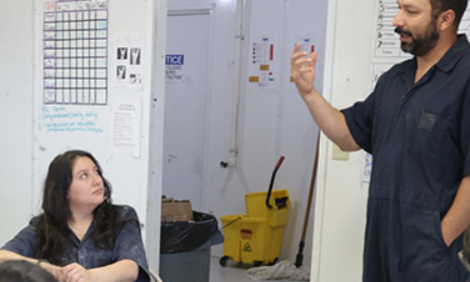



Farmers poised to increase US soy exports on the heels of Soy Connext
Research shows soy from the US is a premium product that increases operational efficiencies for livestock farms, feed mills and oil crushersWith US farmers expected to produce 4.6 billion bushels of soybeans for the 2024/25 crop and supply estimates up 11% over last year[1], according to USDA, the US Soybean Export Council (USSEC) has convened more than 400 international soy customers to elevate a preference for U.S. Soy products and differentiate the quality and value of U.S. Soy from other nutrition and vegetable oil products.
This week, USSEC hosts representatives from 62 countries in San Francisco, Calif., for Soy Connext, the Global U.S. Soy Summit. These countries include Bangladesh, China, Egypt, Indonesia, Japan, and Mexico and represent a range of markets from mature to emerging.
“It’s truly a humbling experience to bring so many key customers from around the world together to meet with U.S. exporters and expand their understanding of the value U.S. Soy offers,” said USSEC Chair Lance Rezac, a soybean farmer from Onaga, Kansas. “Compared to recent years, the price is right for buyers to benefit from U.S. Soy’s many advantages.”
While soybeans are sold as a commodity oilseed, research continues to show that soy from the United States is a premium product that increases operational efficiencies for livestock farms[2], feed mills[3], and oil crushers[4]; introduces better flavor profiles in the soy foods sector[5]; and exemplifies on-farm stewardship and conservation efforts, giving it the lowest carbon footprint[6].
“We’ve all heard the phrase ‘knowledge is power,’” said Jim Sutter, USSEC CEO. “At Soy Connext, we’re unveiling some of the newest data we have available. We’ve long known that U.S. Soy offers a superior nutritional package, but we’ve not been able to quantify it in a way that’s meaningful to buyers. Today, we’re demonstrating that it’s possible, based on our modeling[7], that livestock farms using 100% U.S. soybeans in their feed formulations can unlock $3 million in profits.”
USSEC modeling is based on a broiler operation producing 50 million chickens annually. Sutter added, “USSEC’s technical experts around the world are meeting with customers to help them understand the differences between U.S. Soy and soy of other origins and the effect those differences can have on feed conversion ratios — a huge economic impact over the course of a year.”
As it relates to sustainability, the Global Feed LCA Institute’s database indicates an approximate 20% reduction in the carbon footprint of feed when meal used in the feed formulation is made from 100% U.S. soybeans.
Having developed one of the first sustainability verification schemes, known as the U.S. Soy Sustainability Assurance Protocol (SSAP), USSEC has been at the forefront of sustainability conversations around the world.
Last week, USSEC announced that international customers of U.S. Soy can now request the inclusion of their soy purchase’s carbon footprint on their SSAP certificate. This data, sourced from the Global Feed LCA Institute (GFLI) database, offers a calculation based on the quantity of soy purchased and can be used in their carbon accounting.
“Year over year, USSEC is making advances in delivering value to global U.S. Soy customers by helping them meet their sustainability goals,” said Rosalind Leeck, USSEC executive director of market access and strategy. “In addition to including carbon footprint data on SSAP certificates, we also license the Sustainable U.S. Soy label to companies who wish to showcase the sustainability of their products. The label is now featured on more than 1,000 products globally and is recognized worldwide as a symbol of responsible soybean sourcing.”
The Sustainable U.S. Soy (SUSS) label is used to promote products containing soy verified by the SSAP.
“We see more and more customers of U.S. Soy requesting to license the SUSS label,” Leeck said. “At Soy Connext, we recognized 25 companies in attendance for their commitment to sustainability and their adoption of the SUSS label on their products.”
A few of the companies recognized include Grupo Bios (Mexico), New Anthoney’s (South Asia), Miyoshi Foods Co. (Japan), Sajo Daerim (Korea), PT. Azaki Food Internasional (Southeast Asia), and TTET Oil Union Corp. (Taiwan).
“USSEC’s teams are encouraging international soy customers to look beyond the status quo,” Sutter said. “Today, nearly everything can be measured. The data generated allows us to demonstrate the value of U.S. Soy and unlock profit potential for customers.”
References
[1] World Agricultural Supply and Demand Estimates Report, U.S. Department of Agriculture (August 12, 2024)
[2] USSOY U.S. Soybean Meal Quality Advantage
[3] USSOY Comparing Soybean Meal Processing Conditions
[4] USSOY Soybean Oil Quality Fact Sheet - Refining
[5] USSOY Video: Soybean Oil Allows Food Flavors to Shine
[6] USSEC Brochure: Carbon Footprint of U.S. Soy
[7] Nutrient analysis, metabolizable energy, and digestible amino acids of soybean meals of different origins for broilers, by V. Ravindran, M.R. Abdollahi and S.M. Bootwalla; Effects of Origins of Soybean Meal on Growth Performance, Nutrient Retention and Excreta Microflora of Broilers, Korean Journal of Poultry Science






